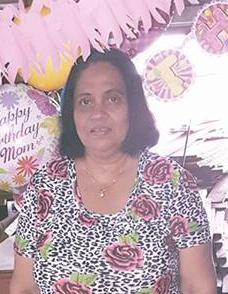The young man accused of killing Mahaicony businesswoman Bibi Shairoon Nesha Ali was yesterday afternoon found not guilty by a jury.
(For legal reasons, the name and identity of the lad who was a juvenile at the time he was implicated and charged, has to be withheld from publication.)
After about two hours of deliberations, the 12-member jury returned with its unanimous verdict, acquitting the 18-year-old.

Justice Navindra Singh informed the visibly-relieved teen, who attended his trial virtually from the Lusignan Prison, of the outcome.
“I guess they’ve thrown away fingerprint science,” the judge remarked, before adding, “But they say you’re not guilty. You know what you did though. You are free to go.”
The lad had been accused of murdering Ali during a robbery at her Lot 4 Novar, Mahaicony, East Coast Demerara home sometime between October 15th and October 17th, of 2016.
He was 14 years old at the time.
Last year, the teen’s co-accused, 27-year-old Davanand Rampersaud, was sentenced to life in prison after confessing to killing the woman.
He was initially indicted for the capital offence, but threw himself at the mercy of the court as he pleaded guilty instead to the lesser charge of manslaughter.
Following the presentation of a probation report, Justice Sandil Kissoon had sentenced Rampersaud to life in prison, while ordering that he serves a minimum of 25 years before becoming eligible for parole.
Leading his defence in unsworn testimony on Thursday, the 18-year-old professed his innocence and maintained that he had nothing to do with the woman’s murder and that he did not know anything about it.
The teen had said that he loved “Aunty Shakeela” as Ali was fondly called and that he did nothing to her.
Asked if he had had anything to say prior to being sentenced, Rampersaud last year had blamed his fate on his 14-year-old co-accused, saying that his intention was only to rob Ali but that it was the teen who took a frying pan and hit her.
Calling for an acquittal, the teen’s attorney Bernard Da Silva had described the prosecution’s case against his client as a weak one, and asked the jury to so find.
He had particularly taken issue with the fingerprint evidence which the state said it had linking the teen to the crime and questioned the plausibility of just a single print from the little finger of the lad being left on a wardrobe in one of the bedrooms of the woman’s house.
Prosecutor Tuanna Hardy had, however, argued that the rock-solid science by which fingerprinting analysis is supported could not be explained away.
Urging the jury not to be distracted by the defence, Hardy had said that the real question to be interrogated was why the print was there—whether it was a single print or multiple. “The evidence is what it is,” she had declared.
Da Silva had contended that the integrity of the chain-of-custody and movement of the fingerprint samples for analysis could have been compromised as he maintained his client’s innocence.
Hardy had said that while the state’s case was circumstantial, it was strong since all the circumstances lined up to paint a full picture of the teen’s involvement.
She had asked the jury to rely on the testimony from a neighbour of the dead woman who had reported seeing the teen in the area on a night and around a timeframe Ali is believed to have been murdered—as well as testimony of the teen’s prior threat to kill the woman for which she had filed a police report.
Referencing the pathologist’s testimony that Ali was likely sexually assaulted, Da Silva had also asked why no DNA analysis was done to bolster the state’s case. But Hardy said that the fingerprint evidence by itself was sound enough.
Also of issue to Da Silva was the fact that a frying pan—the alleged murder weapon—had not been dusted for fingerprints or the room in which Ali’s body was found.
Ali, who lived alone, was found in her home on October 17th, 2016 bound and gagged and her body partially decomposed. The shop which she operated at the premises was ransacked. Boards were removed from the side of the shop through which the intruder/s gained entry.
Neighbours had reported that she had not been seen the two days prior.










